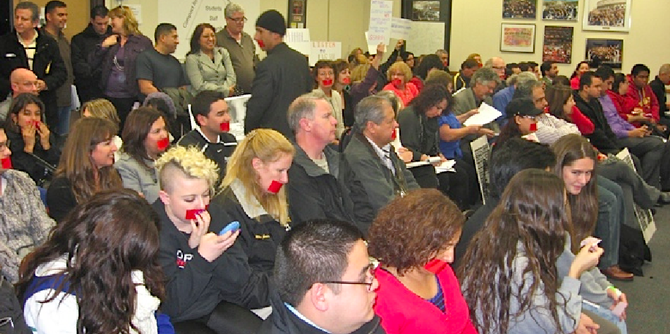 Facebook
Facebook
 X
X
 Instagram
Instagram
 TikTok
TikTok
 Youtube
Youtube

At the January 28 Sweetwater Union High School District board meeting, the majority of trustees voted to support superintendent Ed Brand’s push to open a second charter school; following up the Stephen W. Hawking Math & Science Charter School, the Stephen W. Hawking II charter would also be a PreK-12.
The district’s discussion to advance the charter centered around financial benefits that would accrue to the district. The first price tag for the school is $300,000, up-front money to acquire the state-sanctioned charter. (Board member Pearl Quiñones was absent, and board member Bertha Lopez did not support the superintendent’s recommendation.)
According to district documents, the charter school proposes to “offer a program of study in which science, math, engineering, music and technology permeate nearly every facet of the classroom…. The cradle to career concept is an interdisciplinary project-based, digitally-based, problem-oriented approach to learning.”
At the January 28 meeting, parents and teachers prompted the district to focus on the 7–12-grade students currently enrolled in the district’s schools.
Parent/activist Stewart Payne told the board, "You say it's going to focus on science, math, engineering — well, all our schools should be focusing on those subjects.... Later on you're going to be voting for money to schools that are designated by the state [as] need[ing] improvement. Well, this money should go to those [existing] schools."
Brand said the reason for creating another charter school was “the idea of customer or client and trying to serve their interest…. If we don't create this opportunity, some other entity will.”
The district is positioning itself to receive monies for services including payroll, food, administration, etc.
By fronting the $300,000, the district is hoping to gain a dependent charter, a charter that will rely on the district for services. Off the top, because the charter would be housed in a school building and use district services, the new school would collect average daily attendance funds from the state and give 3 percent of it back to the district. In addition, the district would provide the charter school with food services and administrative services at a cost.
A danger with this money-making strategy is that the charter school could simply vote to be disassociated with the district.
Brand told the audience that the school would generate a $300,000 profit in the first year. Interim chief financial officer Rick Knott corrected this forecast: the projected $300,000 would be cost recovery for the district’s initial investment.


At the January 28 Sweetwater Union High School District board meeting, the majority of trustees voted to support superintendent Ed Brand’s push to open a second charter school; following up the Stephen W. Hawking Math & Science Charter School, the Stephen W. Hawking II charter would also be a PreK-12.
The district’s discussion to advance the charter centered around financial benefits that would accrue to the district. The first price tag for the school is $300,000, up-front money to acquire the state-sanctioned charter. (Board member Pearl Quiñones was absent, and board member Bertha Lopez did not support the superintendent’s recommendation.)
According to district documents, the charter school proposes to “offer a program of study in which science, math, engineering, music and technology permeate nearly every facet of the classroom…. The cradle to career concept is an interdisciplinary project-based, digitally-based, problem-oriented approach to learning.”
At the January 28 meeting, parents and teachers prompted the district to focus on the 7–12-grade students currently enrolled in the district’s schools.
Parent/activist Stewart Payne told the board, "You say it's going to focus on science, math, engineering — well, all our schools should be focusing on those subjects.... Later on you're going to be voting for money to schools that are designated by the state [as] need[ing] improvement. Well, this money should go to those [existing] schools."
Brand said the reason for creating another charter school was “the idea of customer or client and trying to serve their interest…. If we don't create this opportunity, some other entity will.”
The district is positioning itself to receive monies for services including payroll, food, administration, etc.
By fronting the $300,000, the district is hoping to gain a dependent charter, a charter that will rely on the district for services. Off the top, because the charter would be housed in a school building and use district services, the new school would collect average daily attendance funds from the state and give 3 percent of it back to the district. In addition, the district would provide the charter school with food services and administrative services at a cost.
A danger with this money-making strategy is that the charter school could simply vote to be disassociated with the district.
Brand told the audience that the school would generate a $300,000 profit in the first year. Interim chief financial officer Rick Knott corrected this forecast: the projected $300,000 would be cost recovery for the district’s initial investment.
Comments